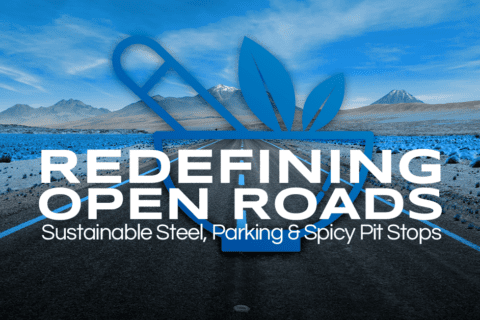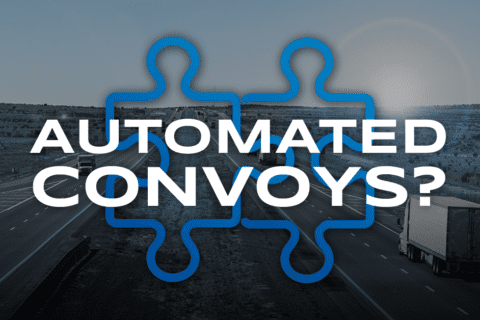From Courtrooms to Highways: Another Week in the Fast Lane
Fasten your seatbelts, commercial drivers, logistics professionals, and industrial staff! We’re about to embark on a thrilling journey through the current landscape of the trucking industry. In this week’s news, we confront the rise of ‘nuclear verdicts’ threatening the very heartbeat of our industry. We’ll navigate the ebb and flow of the trucking capacity, wade through the interconnected sectors, and see how we can keep our wheels turning amidst these challenges. Lastly, we’ll feel the jolt of the sudden closure of a critical 7-mile stretch of Interstate 95 and discover the alternative routes we could take to keep our deliveries on time. Let’s take a cruise through the twists and turns of our industry’s latest happenings. The Rising Trend of Nuclear Verdicts The trucking industry is facing an alarming increase in nuclear verdicts, defined as those exceeding $10 million. A surge of 967% over the last 15 years has been reported by the American Transportation Research Institute. These astronomical awards outpace the rise in healthcare costs and inflation, and according to Paul Enos, CEO of the Nevada Trucking Association, they pose a significant threat to the industry. Plaintiff attorneys are said to be fueling this trend through rigorous deposition strategies, including the “reptile theory,” a legal tactic that prompts jurors to perceive a defendant’s conduct as a personal threat to their safety and community. Fighting Back: The Mongoose Method Despite the alarming trend, the industry has developed counterstrategies to tackle the aggressive tactics of plaintiff attorneys. Dubbed the “Mongoose Method,” this approach empowers defense attorneys and trucking companies with training and tools to identify traps, understand trends, and alter outcomes before an accident occurs. The Mongoose Method encompasses various steps including developing a crisis response plan, pre-deposition training, and conducting jury research. According to Dr. Bill Kanasky, Jr., senior vice president of litigation psychology at Courtroom Sciences Inc., investing in preparation and research can cost significantly less than the potential exposure and damages a company may incur without it. Restoring Balance, Ensuring Fairness The aim is not to evade responsibility, but to ensure that verdicts are fair and just, thereby avoiding a jackpot justice system that could negatively impact the trucking industry, the economy, and society at large. Trucking companies are willing to take responsibility when at fault, but there’s a strong need to resist unfair verdicts that fall within the scope of the jackpot justice system. The strategic implementation of the Mongoose Method offers hope for rebalancing the scales of justice in the trucking industry. 🔗 Learn more about the Scales of Justice in Trucking here The Ebbing Capacity of the Trucking Industry The trucking industry, amidst a record exodus of fleets and a plummeting spot market, is witnessing a significant loss in capacity, according to industry analysts from FTR Transportation Intelligence. Factors contributing to this situation include trends in related sectors like ocean shipping, ports, container movements, and intermodal, underlining the interconnected nature of trucking with these sectors. Avery Vise, FTR VP of trucking, emphasized the ongoing impact of fleet failures and the dwindling spot market for freight. Additionally, Vise also highlighted a concerning exodus of fleets and a forecasted normalization of the spot market by the middle of the third quarter of 2023. The State of Equipment and Freight Rates Despite the capacity challenges, it’s not all bleak news for the trucking industry. While the spot market rates have seen a significant slump, the latest data suggests that the rates have bottomed out and are expected to flatten at worst. Furthermore, while Class 8 orders are witnessing a slowdown, they have not collapsed. A healthy backlog is reportedly sustaining the new equipment market, although there’s a warning that orders could potentially fall below replacement levels. There was a surge in Class 8 orders in May 2023, which went against the downward trend, coming in at 13,600 total tractors, nearly 9% higher than April levels. Shifting Landscape: Port Traffic and Intermodal Dynamics An interesting shift is being observed in the area of port traffic and intermodal dynamics. Major West Coast ports, such as Los Angeles and Long Beach, are reportedly losing container traffic and market share. This change is prompting a significant movement of intermodal traffic away from the West Coast, with the Port of Houston emerging as a beneficiary. This shift is seen as an intriguing development in the post-pandemic landscape, with carriers attempting to develop cross-border business. However, intermodal is expected to face a stiff competition from trucking through 2024. 🔗 Read the full article on trucking capacity here Navigating through the Unexpected Philly-area trucking is facing serious challenges due to the prolonged closure of a crucial 7-mile stretch of Interstate 95, following a fiery accident. The incident caused significant damage to both northbound and southbound lanes, eliminating chances for partial service to resume anytime soon. This reality is leaving trucking officials hesitant about forecasting the potential impacts on service. Pennsylvania Governor, Josh Shapiro, expects the closure and repairs to last for several months, sparking debate about the state’s readiness and capacity for a speedy reconstruction. Looking for the Golden Detour Trucking companies are actively seeking alternate routes to circumvent the closure. Some companies consider detouring via the Pennsylvania Turnpike, which carries the designation of Interstate 76, as a plausible option. Rebecca Oyler, President of the Pennsylvania Motor Trucking Association (PMTA), also mentioned the possibility of toll waivers and hours-of-service waivers, though these would require legislative authority and are still under preliminary discussion. Another scenario is redirecting traffic through New Jersey, using a combination of interstates 195 and 295, which might result in added traffic on the New Jersey side of the river. The logistics and industrial staffing industry will need to adapt to these changes. Industries along the affected stretch of I-95, including the port and city’s airport, will likely experience disruption as roughly 9% of the daily traffic is composed of trucks. Overall, the aftermath of the accident highlights the intricate logistics and significant impacts associated with a major interstate closure. 🔗 Learn…











Recent Comments